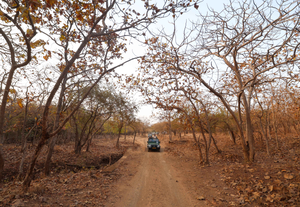
Ahmedabad: The Gujarat government has officially closed all 27 wildlife sanctuaries and national parks in the state to tourists for a period of four months, from June 16 to October 15.
This annual closure aims to protect wildlife during the crucial breeding season, particularly mammals, birds, and reptiles, by minimising human interference. A notification was recently issued by the office of the Conservator of Forests in Gandhinagar, following a directive from the Principal Chief Conservator of Forests.
The decision reiterates the state’s commitment to conservation by ensuring that the habitats remain undisturbed during this sensitive phase of the animal life cycle.
As part of this closure, popular destinations like Nalsarovar Bird Sanctuary in Sanand will also remain off-limits to visitors for the entire 120-day period. Tourist access will resume after October 15, 2025, once the mating and nesting activities conclude.
Gujarat’s wildlife sanctuaries are home to a diverse range of mammals, birds, and reptiles, many of which rely on the monsoon months from June to October for breeding. Among mammals, iconic species such as the Asiatic lion in Gir, wild ass in the Little Rann of Kutch, sloth bear in Jessore, leopard, blackbuck, chinkara, and striped hyena can be found across various reserves.
These species need undisturbed habitats for mating and nurturing their young. The state is also a significant haven for birdlife, with sanctuaries like Nalsarovar and Khijadiya attracting migratory and resident birds such as flamingos, pelicans, painted storks, spoonbills, herons, and a wide variety of ducks and waders.
Raptors like the crested serpent eagle and marsh harrier also breed in the protected zones. Reptilian fauna in these areas includes mugger crocodiles, Indian rock pythons, monitor lizards, and a range of turtles and snakes. Many of these reptiles lay eggs or give birth during this season, requiring quiet, moist environments. Closing the sanctuaries during these critical months helps maintain the delicate ecological balance and gives wildlife the space and safety they need for successful reproduction.
